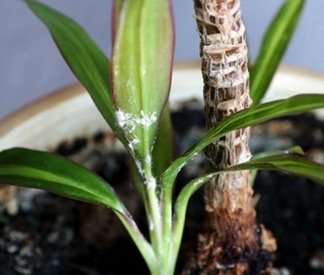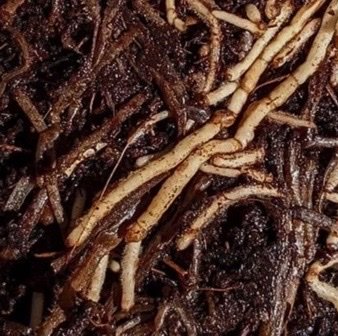
COMMON PESTS & DISEAES
The guide below can be used to diagnose and better understand the pests and diseases most commonly encountered with houseplants. Please note: all pests and diseases must be continually monitored and treated several time to resolve the issue.
MEALY BUG
Mealy bug is usually discovered by noticing what looks like the tip of a cotton swab along the upper and undersides of a plant leaves, stems and even flowers. The adults appear slightly larger than a sesame seed with legs. Insecticidal Soap, Neem Oil and rubbing alcohol are all effective treatments that smother the insects and egg sacks.
Mealy bug favors warm and humid environments.
SCALE
Scale is oval in shape and can be found on both leaves and stems of plants. They can appear quite flat and smaller than a sesame seed, however some types can be as large as a wrinkled pea. These insects need to be physically removed- foliage wipes are an effective way to achieve this, or spraying the plant with Insecticidal Soap, Neem Oil or rubbing alcohol, all followed by wiping the leaves and stems with a cloth.
Scale favors warm and dry environments.
SPIDER MITES
Spider Mites are often first detected by observing that the once vibrant green leaves look dull. Upon closer look, you may see webbing at the leaf axis, upper and undersides of leaves. You may also see the nearly microscopic insects crawling amongst the webs. Insecticidal Soap and Neem Oil are effective treatments- spray the plant to the point of dripping.
Spider mites favor dry environments.
FUNGUS GNATS
Adult fungus gnats are ANNOYING when they fly around our faces or skitter about on the soil surface of plants. They don’t cause a large amount of harm to plants, but they are a nuisance worth addressing. They lay their eggs in the soil of plants, therefore treat the soil with a larvacide and use yellow sticky traps to capture adults and prevent future egg laying populations.
Fungus gnats favor wet soil and decaying organic matter.
POWDERY MILDEW
Powdery mildew appears as a light dusting of white powder on the upper sides of leaves. It spreads quickly if left untreated and plants suffering from powdery mildew should be separated by several feet from other plants. A sulfur-based fungicide is very effective as well as Neem oil and hydrogen peroxide.
Powdery mildew thrives in a humid environment that lacks air flow.
ROOT ROT
If you are certain you are watering your plant an adequate amount, but it seems to not be growing, is in a slow decline or is even wilted, you may be dealing with root rot. Removing the plant from its pot to reveal the roots is the best way to diagnose this. As long as the entire root system hasn’t been compromised, many plants can be brought back to health. It may require changing the soil medium to one with better drainage, applying a fungicide, and/or repotting into a smaller pot with less soil volume.
Root rot favors overly wet soil without adequate drainage and oxygen.
HAVE A QUESTION?
Send us an email at botanyhouseplantshop@gmail.com
Or give us a call at 970-340-4528







